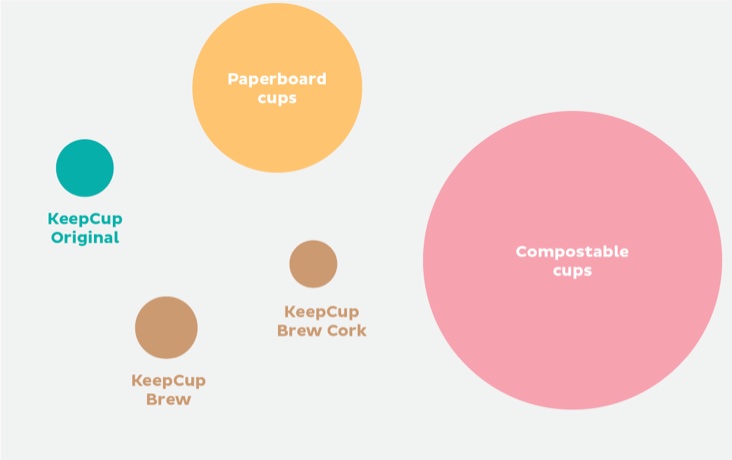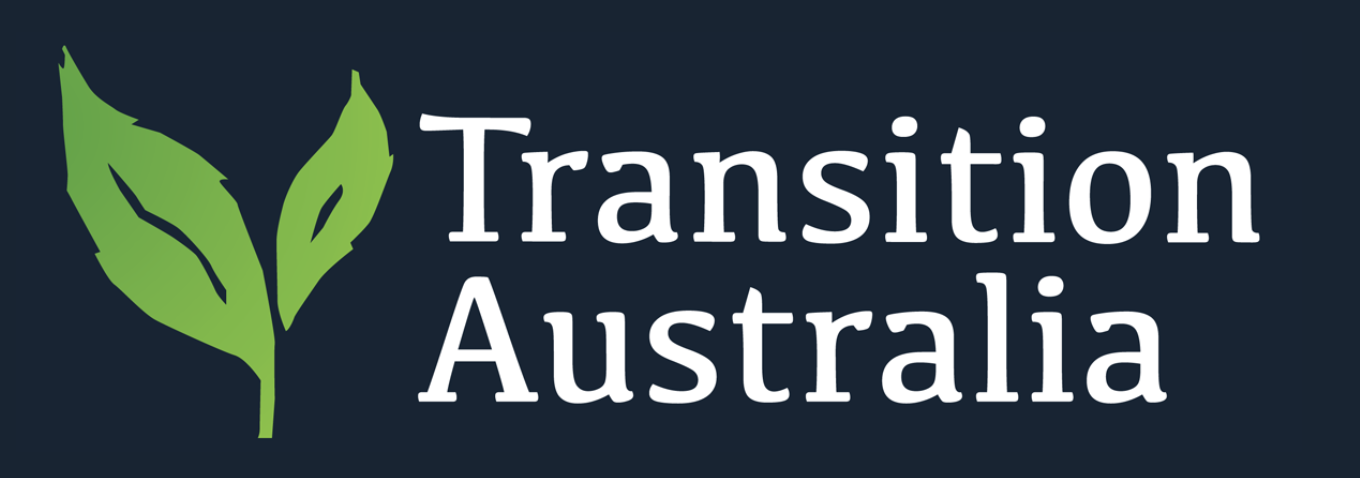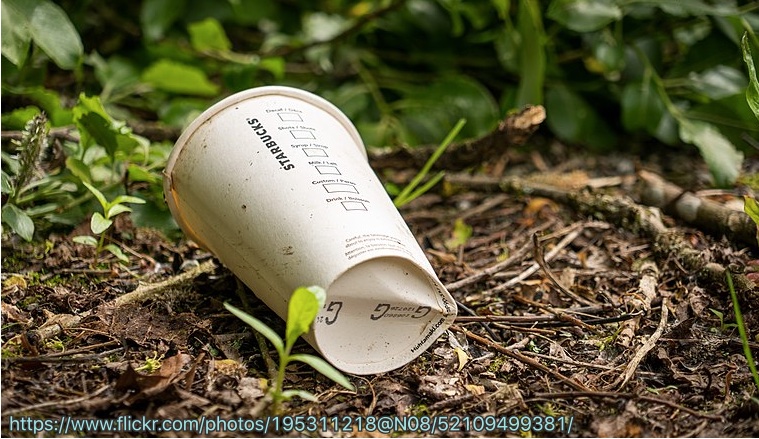Australians throw out 2.7 million single-use or disposable coffee cups every single day – Sustainability Victoria
Recycle or Compost?
You would think these could be recycled or composted, but that just does not happen. The paper-based cups contain a plastic liner and so can not be recycled through the paper stream. The “compostable” cups can not be collected on any scale large enough to feed the commercial compost facilities, so they just add to the waste problem.
The Solution? – Reusable Cups and Mugs
Thirty years ago everyone drank their coffee or tea in the cafe that served them. The china cups stayed put, and were washed and reused thousands of time. But times changed and the idea of a take-away, coffee in the car or park, coffee while walking the dog ( or child ) became a pleasurable part of life – until we realised the waste was a cost we could not afford.
Many individual companies & cafes started to make a change.
Manufacturers like KeepCup, Huskee, Cheeki, Frank Green, and Kleen Kanteen released cups, mugs and lids designed to for ease of use, safety, and taste neutrality – they were made of pottery, food safe plastic, stainless steel, and synthetic materials made from plant materials, including recycled coffee grounds. [more from Choice magazine ]
Cafes also started to encourage reusable cups and mugs. Many offered discounts to customers supplying their own cups, or encouraged reuse by supplying a china cup on a “use it & return it” basis to regular customers. This has now grown to huge range of cafes that actively promote reusable cups – the Responsible Cafes network.
The Next Step? – Government Policy
Local Government has long recognised the landfill & waste management costs of disposable cups ( and other food serving items ). In the next two years plastic coffee cups and lids will be subjected to new rules leading to outright banning across the European Union and the UK. Some countries, including Germany are introducing laws that require all cafes to supply reusable cups and lids. Many other countries are planning a levy or tax on all disposable cups and lids.
In Australia, Western Australia is banning plastic coffee cups in 2023 and Queensland has started a similar legislative process.
Technology to the Rescue?
The scale of the change needed is enormous! Cafes cannot afford to give away reusable cups, and putting the cost on to individual customers ( $20-40 each for good reusable cups ) is unfair. So industry scale programs are being developed. These range from weekly subscription programs that provide cafes with new reusable cups or second-hand china cups from op shops, and including washing support or in-house washing machines. Customers can return & exchange their used cup at the same or other cafes in the scheme. Three examples are Our Kinds, GO2CUP and RENOME. The other approach is for customers to sign up to an app, and actively use cafes that offer a “swap-and-go” take away cup and lid from the supplier company ( Green Caffeen )
Environmental Cost?
Yes, making ( and washing ) a reusable cup or mug has its own cost in CO2 but once it has been used 20 times, the cost is far less than one single use paper based cup ( estimated at 0.11kg of CO2 and 0.09m2 of forest – link )

Feature Image credit: The Bag N Box Man LTD at meanwell-packaging.co.uk/, via Flikr under Creative Commons.
Tom Danby, Moonee Valley Sustainability, 2022

